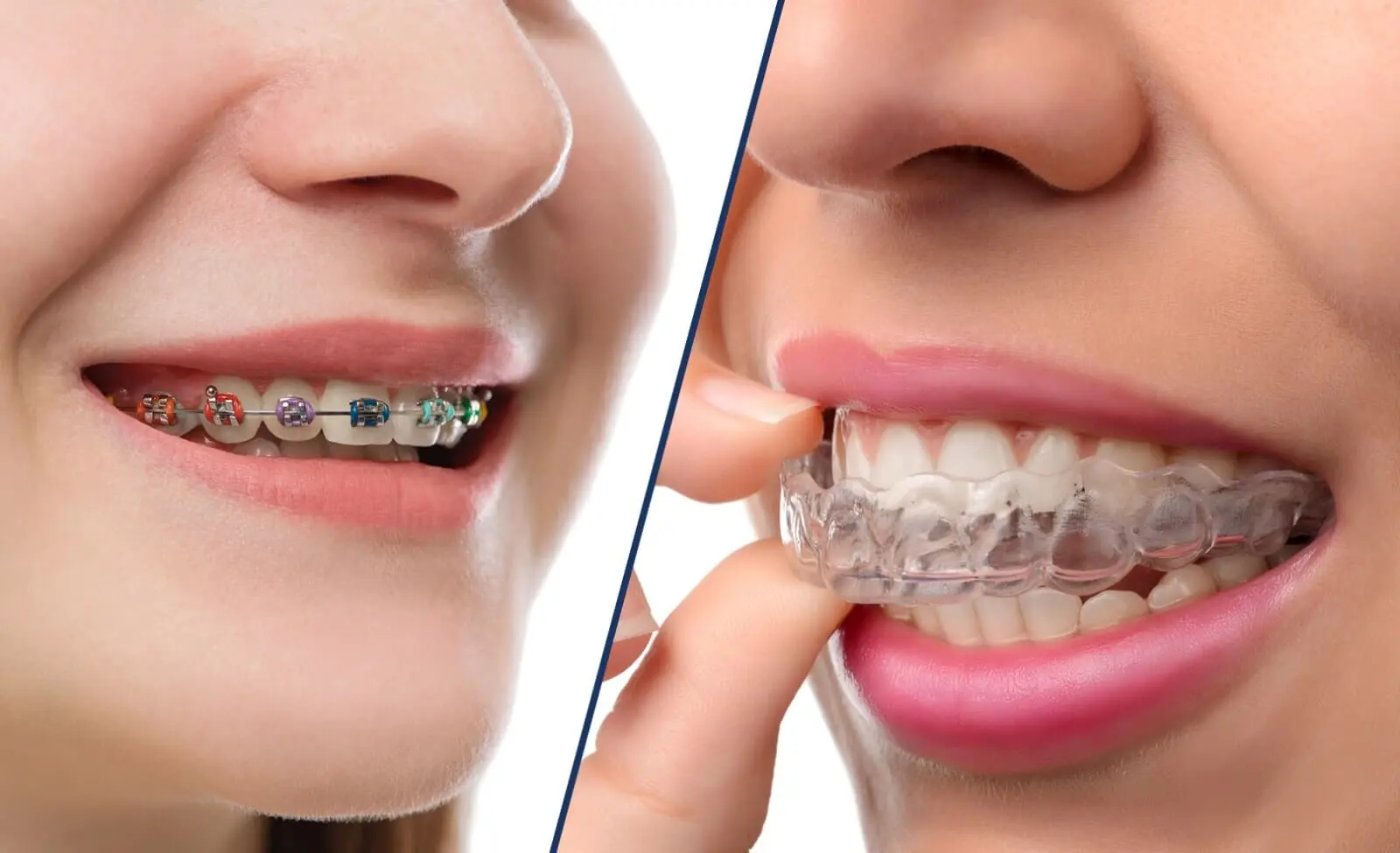Your cart is currently empty!
What Is Better, Invisalign or Braces? A Realistic Comparison for Your Smile

Choosing the right orthodontic treatment can feel overwhelming, especially when comparing Invisalign vs braces. Whether you’re an adult or a teen, the decision to go with clear aligners like Invisalign or traditional metal braces comes down to personal preference, budget, lifestyle, and the complexity of your dental issues.
This guide breaks it all down in simple terms so you can make an informed decision. Let’s compare braces and invisible aligners step-by-step.
What Are Braces?
Traditional braces are made of metal brackets and wires attached to the teeth. These are adjusted periodically by your orthodontist to gradually move your teeth into the correct position. Some modern versions include ceramic braces, which blend better with your teeth, but the function is mostly the same.
Braces have been around for decades and are highly effective for treating even the most severe alignment and bite problems.
What Is Invisalign?
Invisalign is a brand of invisible aligners, also called clear aligners. These are custom-made plastic trays designed to fit snugly over your teeth. Each tray is worn for about one to two weeks, gradually shifting your teeth into place.
You remove the aligners when eating, brushing, or drinking anything other than water. Most Invisalign treatments are completed in 6 to 18 months, depending on the complexity of the case.
Invisalign vs Braces: Side-by-Side Comparison
Let’s look at the key factors that may influence your decision.
1. Appearance
- Invisalign: Virtually invisible. Most people won’t even notice you’re wearing them.
- Braces: Metal brackets and wires are visible, though clear or ceramic options are less noticeable.
Winner: Invisalign (for aesthetics)
2. Comfort
- Invisalign: Made from smooth plastic, less likely to irritate gums or cheeks.
- Braces: May cause discomfort, especially after adjustments. Brackets can cause mouth sores.
Winner: Invisalign (for comfort)
3. Removability
- Invisalign: Can be removed for meals, brushing, and flossing.
- Braces: Fixed to your teeth until treatment is complete.
Winner: Invisalign (for flexibility)
4. Effectiveness
- Invisalign: Works best for mild to moderate issues like gaps, crowding, or minor bite problems.
- Braces: Ideal for complex dental problems, including severe misalignment and jaw issues.
Winner: Braces (for severe cases)
5. Maintenance and Oral Hygiene
- Invisalign: Easy to maintain oral hygiene since aligners are removable.
- Braces: More difficult to brush and floss; food can get stuck in wires and brackets.
Winner: Invisalign (for easier cleaning)
6. Treatment Time
- Invisalign: Usually takes 6–18 months.
- Braces: May take 12–24 months, depending on the case.
Winner: Invisalign (in many cases, but not always)
7. Cost
- Invisalign: Can cost slightly more than traditional braces but prices are now more competitive.
- Braces: Often more affordable, especially for children and teens.
Winner: Tie (depends on your case and provider)
Who Should Choose Invisalign?
Clear aligners like Invisalign are perfect for:
- Adults or teens who want a discreet option
- People with mild to moderate alignment issues
- Those who can commit to wearing the aligners 20–22 hours per day
- Individuals who prioritize convenience and aesthetics
Invisalign is also a great option for people who have had braces before and need minor corrections.
Who Should Choose Braces?
Traditional braces may be the better choice for:
- Patients with severe misalignment or complex bite issues
- Children or teens who may not be consistent with removable aligners
- People looking for a potentially more cost-effective solution
- Individuals who prefer not to manage wearing/removing trays daily
Braces offer predictable results and are still the gold standard for many orthodontic professionals.
Are There Any Downsides?
Yes, both options have their limitations.
Invisalign:
- Requires discipline to wear consistently
- May not be suitable for very complex cases
- Needs removal before eating or drinking anything other than water
Braces:
- More visible
- Can be uncomfortable, especially after tightening
- Make brushing and flossing more difficult
Final Verdict: Invisalign vs Braces
There’s no one-size-fits-all answer. The better option between Invisalign and braces depends on your unique dental needs, lifestyle, and budget.
If you want a discreet, flexible, and comfortable solution—and your dental issues are moderate or mild—clear aligners like Invisalign could be the perfect match.
But if your case is more severe, or you’re looking for a proven, no-hassle solution that doesn’t rely on daily discipline, traditional braces might be the better choice.
The best way to know for sure? Book a consultation with an orthodontist. They’ll evaluate your teeth and help you decide what treatment will get you the best results.
About the author
Leave a Reply